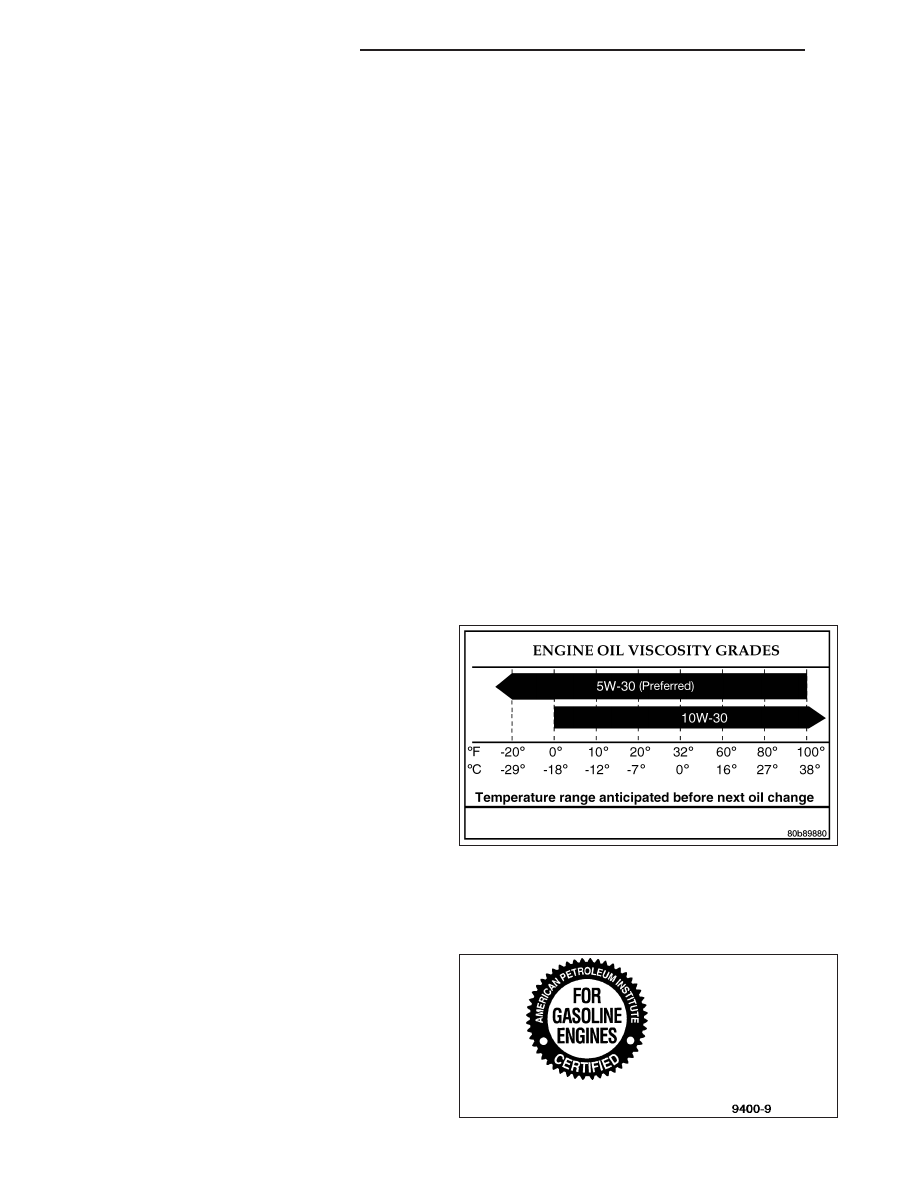Jeep Liberty KJ. Manual - part 5

FLUID TYPES
DESCRIPTION
ENGINE OIL
WARNING: New or used engine oil can be irritating to the skin. Avoid prolonged or repeated skin contact
with engine oil. Contaminants in used engine oil, caused by internal combustion, can be hazardous to your
health. Thoroughly wash exposed skin with soap and water. Do not wash skin with gasoline, diesel fuel,
thinner, or solvents, health problems can result. Do not pollute, dispose of used engine oil properly. Contact
your dealer or government agency for location of collection center in your area.
Only lubricants bearing designations defined by the following organization should be used.
•
Society of Automotive Engineers (SAE)
•
American Petroleum Institute (API)
•
National Lubricating Grease Institute (NLGI)
•
Association des Constructeurs Européens d’ Automobiles (European Automobile Manufacturers Association)
(ACEA)
API SERVICE GRADE CERTIFIED
Use an engine oil that is API Certified. MOPAR
T
provides engine oils, that meet or exceed this requirement.
SAE VISCOSITY
An SAE viscosity grade is used to specify the viscosity of engine oil. Use only engine oils with multiple viscosities
such as 5W-30 or 10W-30. These are specified with a dual SAE viscosity grade which indicates the cold-to-hot
temperature viscosity range. Select an engine oil that is best suited to your particular temperature range and vari-
ation.
ACEA Categories
For countries that use the ACEA European Oil Cate-
gories for Service Fill Oils, use engine oils that meet
the requirements of ACEA A1/B1, A2/B2, or A3/B3.
ENERGY CONSERVING OIL
An Energy Conserving type oil is recommended for
gasoline engines. The designation of ENERGY CON-
SERVING is located on the label of an engine oil con-
tainer.
CONTAINER IDENTIFICATION
Standard engine oil identification notations have been adopted to aid in the proper selection of engine oil. The iden-
tifying notations are located on the front label of engine oil plastic bottles and the top of engine oil cans.
This symbol means that the oil has been certified by the American Petroleum Institute (API). DaimlerChrysler only
recommends API Certified engine oils. Use Mopar
T
engine oil or equivalent.
ENGINE OIL - DIESEL ENGINES
Only use synthetic engine oils meeting the API Cate-
gories
SL/CF
and
Chrysler
Material
Standard
MS-10725. Those engine oils not meeting the viscosity
and API Quality and MS-10725 requirements should
not be used.
0 - 4
LUBRICATION & MAINTENANCE
KJ